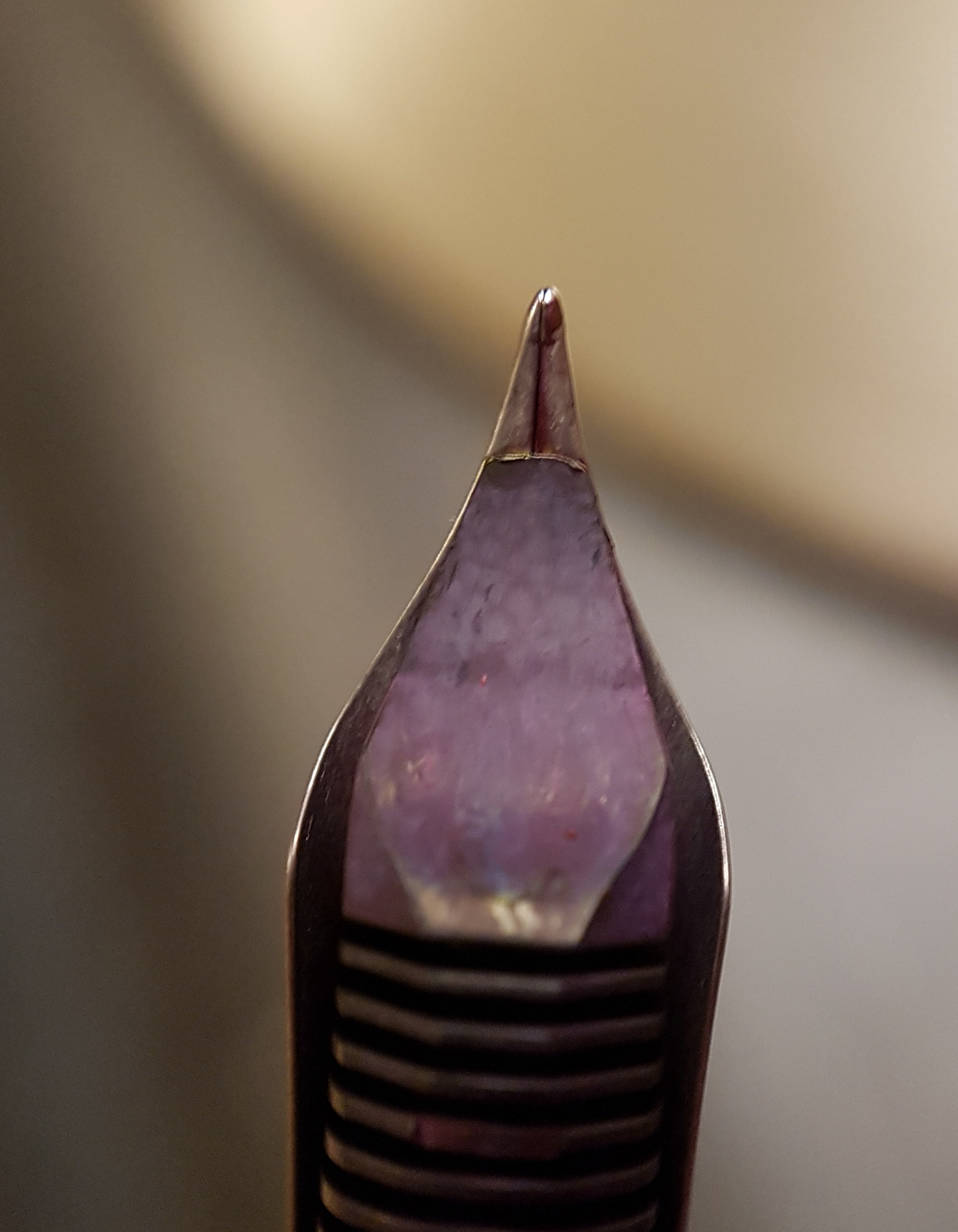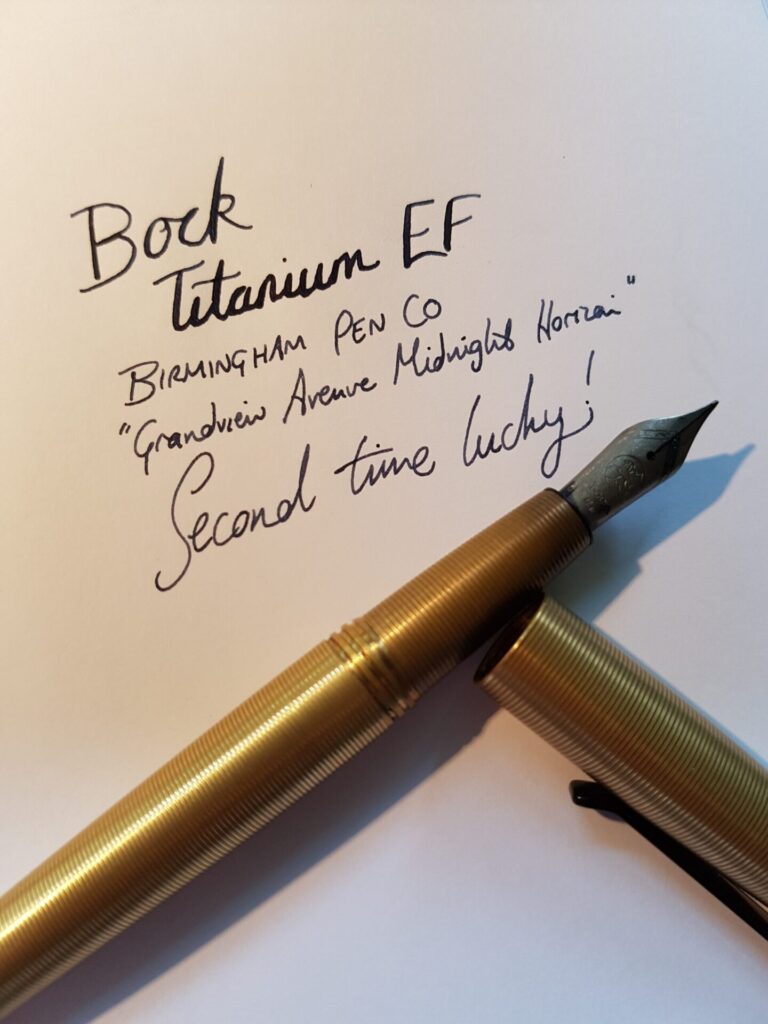I took the plunge last week and ordered a titanium extra-fine nib unit by Bock to put in my Tactile Turn Gist. Titanium nibs seem to be one of the “hot topics” in stationery right now, promising a space-age aesthetic with a little bit of flex, at half the price of gold. I paid just shy of £60 for mine.
I know from my EDC experience that titanium is a very difficult material to machine. And while some reviews of the Ti nibs were glowing, others commented on scratchiness and other symptoms. So I was a bit nervous about what I’d get.
Unfortunately, the nib I received had problems. It wrote OK, but it skipped and hard-started and was even scratchier than I expected. Was this just what titanium EF nibs are like? Or did I get a duffer?
To the naked eye, things didn’t look quite right. It looked like the central slit was cut off-centre, and messily, leaving a kind of weld-line visible on top of the nib. I busted out my trusty Belomo loupe. This is what I saw.

“They’re all like that, sir”
Sure enough, one tine is longer, wider and with more tipping than the other.
I still hesitated about sending it back. Was I making a fuss over nothing? Should I be more tolerant of imperfection on an extra-fine nib? But ultimately I got in touch with the retailer — Beaufort Ink — who whizzed me out a replacement within the hour, with many apologies.
The replacement is a complete revelation. It’s got a little bit of texture and toothiness — how I imagine a Sailor nib is — and plenty of spring to create some line variation. But it’s wet and writes without hesitation, every time. I love it and the unique writing experience it gives me. I wished I hadn’t hesitated even a day to complain.

Here’s the lesson: don’t put up with a problem nib!
Without the tip-off from other reviews, a loupe to investigate, and plenty of experience handling other nibs, I could have persuaded myself into thinking that the nib was meant to be the way it was. After all, Bock is one of the world’s largest nib manufacturers… surely its quality control is flawless? So I’d have tolerated it for a while until subconsciously the skipping drove me insane, then I’d have put it in a drawer and written off £60.
I’ve done that a few times, with nibs from various manufacturers. I’ve had Kaweco nibs with baby’s bottom, that hard-started just enough to be annoying. I’ve had a Pilot 91 nib that was dry because the tines were too tight. And I’ve had Jowo nibs that skipped and starved.
In some cases, I’ve just stopped using the pen. In others, I’ve fixed it myself. And in others, where the nib was cheap, I’ve just bought a replacement.
But is that right? Should we expect perfection out of the box?
Some people are happy to do a bit of tuning to get pens writing the way they like them — after all, some like a dry toothy nib, others a smooth gusher. Some expect their retailers to test and tune the nibs they sell; others would rather the pen came uninked and would prefer to avoid the cost and delay that tuning incurs.
And then there’s the majority, I believe, who have no interest in or awareness of pen tuning, and believe that you should be able to put ink in a pen and have it write every time it touches the paper.
Me? I’m happy to tweak a nib a little to suit my tastes. But no flushing, flossing or flexing will fix some nib problems. And that’s where you need the education to spot the flaw, the confidence to pipe up about your dissatisfaction, and an honest retailer who’ll make it right.

0 Comments
9 Pingbacks